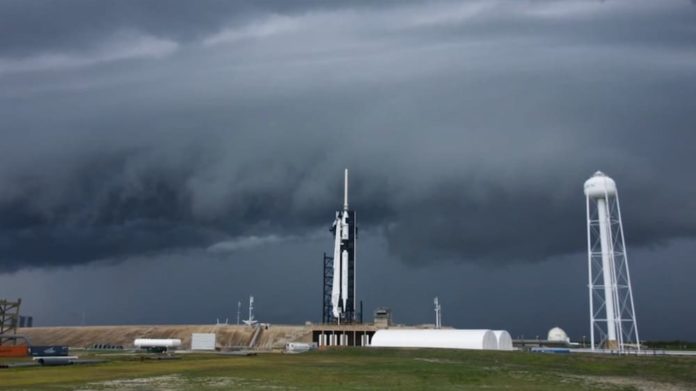Launching a rocket into space is a complex and precise endeavor, requiring careful consideration of numerous factors. Among these, weather conditions play a critical role. The success or failure of a launch can hinge on the state of the atmosphere, making weather monitoring and forecasting essential components of any space mission.
Wind conditions
Wind is one of the most significant weather factors that can affect a rocket launch. High winds can destabilize the rocket during its ascent, posing a risk to both the vehicle and its payload. Upper-level winds, in particular, can create wind shear—a sudden change in wind speed or direction with altitude—which can be dangerous for rockets as they pass through these layers of the atmosphere. Numerous launches have been delayed or rescheduled due to adverse wind conditions, underscoring their importance in launch planning.
Temperature and humidity
Extreme temperatures can affect rocket components and systems. Cold temperatures can cause fuel to thicken and make it harder to pump, while extreme heat can damage electronic systems and other sensitive equipment. Humidity also plays a role; high humidity can lead to condensation on the rocket, which can cause issues with the vehicle’s electronics and structural integrity. Examples of temperature-related launch delays include missions where extreme cold required additional insulation and heating systems to maintain operational temperatures for critical components.
Precipitation and cloud cover
Rain, thunderstorms, and lightning are significant hazards for rocket launches. Rain can damage the rocket’s exterior and interfere with electronic systems, while lightning poses a direct threat of striking the rocket, potentially causing catastrophic failure. Cloud cover can also affect the visibility required for tracking the rocket during its ascent and ensuring it stays on the correct trajectory. As a result, launches are often scrubbed or delayed when there’s a risk of thunderstorms or significant cloud cover.
Atmospheric pressure
Atmospheric pressure can influence rocket performance, particularly during the initial stages of the launch. Variations in pressure can affect the combustion process in rocket engines, impacting fuel efficiency and thrust. Lower atmospheric pressure at higher altitudes allows rockets to operate more efficiently, but significant changes in pressure can pose challenges during the transition from the ground to space.
Weather monitoring and forecasting
Modern technology has greatly enhanced the ability to monitor and predict weather conditions. Satellites, weather balloons, and ground-based radar systems provide real-time data on atmospheric conditions. Meteorologists play a crucial role in interpreting this data and advising launch teams on the optimal conditions for a safe launch. Accurate weather forecasting helps in making informed decisions and minimizing the risks associated with adverse weather conditions.
Launch windows
A launch window is a specific timeframe during which a rocket can be launched to reach its intended orbit or destination. Weather conditions are a major factor in determining these windows. Launch windows must consider not only the position of celestial bodies but also the current and forecasted weather. Optimal launch windows are those with the most favorable weather conditions, reducing the likelihood of delays or scrubs.
Safety protocols and contingency plans
Safety is the top priority in rocket launches, and strict protocols are in place to address adverse weather conditions. If conditions are not ideal, launches may be delayed or scrubbed to ensure the safety of the vehicle and crew. Contingency plans are prepared for such scenarios, allowing for rescheduling within the launch window or even weeks later if necessary.
Historical examples of weather-affected launches
There have been several notable instances where weather conditions have significantly impacted rocket launches. For example, the Space Shuttle Challenger disaster was influenced by cold weather, which caused the O-rings in the solid rocket boosters to fail. More recently, SpaceX has experienced delays due to high winds and lightning risks. Each of these events has provided valuable lessons, leading to improved safety measures and better weather-related decision-making processes.
Future advances in weather prediction
Emerging technologies promise to improve weather forecasting even further. Advances in machine learning and artificial intelligence are being integrated into meteorological models to enhance the accuracy and reliability of weather predictions. These improvements will allow for more precise scheduling of rocket launches, minimizing the risks posed by unexpected weather changes.
Weather conditions are a critical factor in the success of rocket launches. From wind and temperature to precipitation and atmospheric pressure, understanding and predicting weather patterns are essential for ensuring the safety and efficiency of space missions. As technology continues to advance, our ability to monitor and forecast weather will improve, leading to more reliable and successful rocket launches in the future.
FAQs
Why are wind conditions critical for rocket launches?
Wind conditions can affect the stability of a rocket during its ascent. High winds, especially at upper levels, can cause wind shear, which can destabilize the rocket and pose significant risks.
How do temperature and humidity affect rocket launches?
Extreme temperatures can affect the performance of rocket components, while high humidity can lead to condensation issues. Both factors need to be carefully managed to ensure a successful launch.
What are the dangers of launching in rainy conditions?
Rain can damage the rocket’s exterior and interfere with its electronic systems. Thunderstorms and lightning pose even greater risks, as a lightning strike can cause catastrophic failure.
How do atmospheric pressure changes impact rockets?
Atmospheric pressure variations can affect the combustion process in rocket engines, impacting fuel efficiency and thrust. Proper management of these changes is crucial for a successful launch.
What technologies are used to monitor weather before a launch?
Satellites, weather balloons, and ground-based radar systems are commonly used to monitor weather conditions. These technologies provide real-time data that meteorologists use to advise launch teams on optimal conditions for a safe launch.













